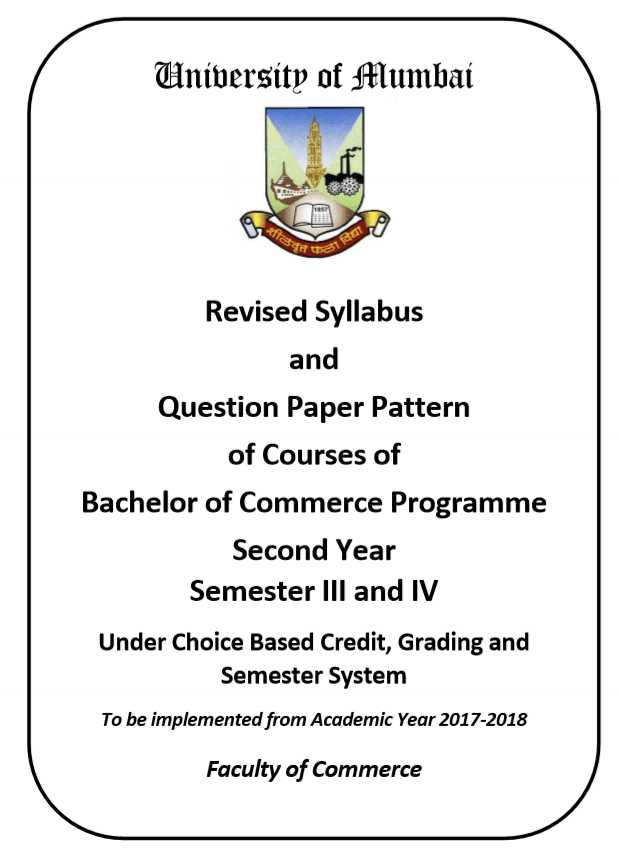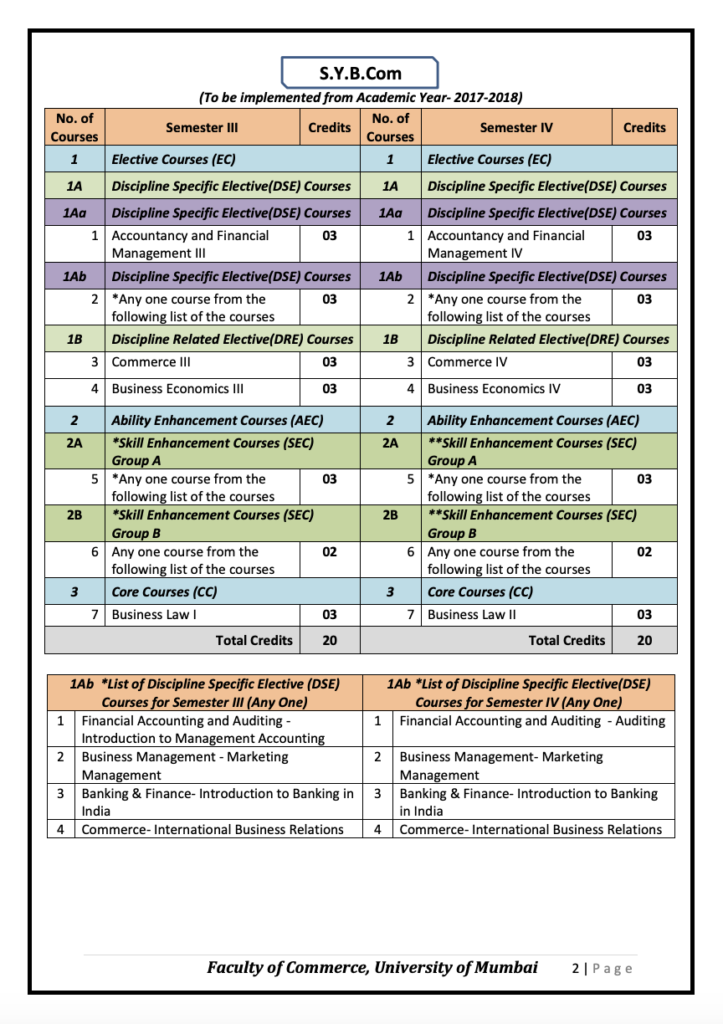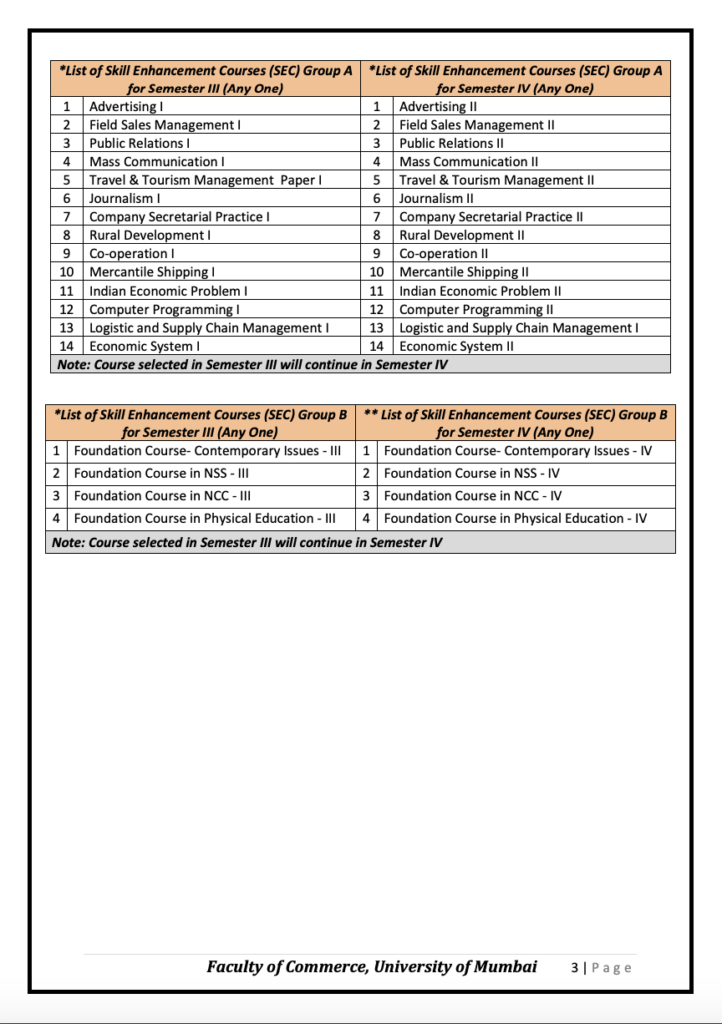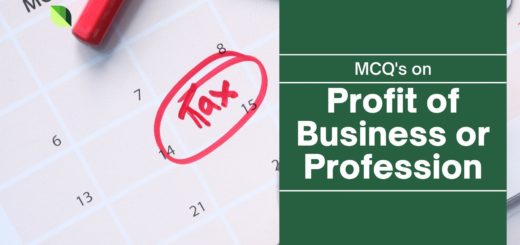SYBCOM Syllabus – Mumbai University SEM 3 & 4 Subjects Free pdf
Table of Contents
SYBCOM Syllabus Sem III
SYBCOM Notes – Download
Accountancy & Financial Management – III
Chapter 1: Partnership Final Accounts based on Adjustment of Admission or Retirement/Death of a Partner during the year
i) Simple final accounts questions to demonstrate the effect on final Accounts when a partner is admitted during the year or when the partner Retires/dies during the year.
ii) Allocation of gross profit prior to and after admission/retirement/death when stock on the date of admission/retirement is not given and apportionment of other expenses based on time / Sales/other given basis.
iii) Ascertainment of gross profit prior to and after admission/retirement/death when stock on the date of admission/retirement is given and apportionment of other expenses based on time / Sales / other given basis Excluding Questions where admission/retirement/death takes place in the same year.
Chapter 2: Piecemeal Distribution of Cash
i) Excess Capital Method only
ii) Asset taken over by a partner
iii) Treatment of past profits or past losses in the Balance sheet
iv) Contingent liabilities / Realisation expenses / amount kept aside for expenses and adjustment of actual
v) Treatment of secured liabilities
vi) Treatment of preferential liabilities like Govt. dues/labour dues etc. Excluding: Insolvency of partner and Maximum Loss Method
Chapter 3: Amalgamation of Firms
i) Realization method only
ii) Calculation of purchase consideration
iii) Journal/ledger accounts of old firms
iv) Preparing the Balance sheet of the new firm
v) Adjustment of goodwill in the new firm
vi) Realignment of capital in the new firm by current accounts/cash or a combination thereof Excluding Common transactions between the amalgamating firms
Chapter 4: Conversion / Sale of a Partnership Firm into a Ltd. Company
(i) Realisation method only
(ii) Calculation of New Purchase consideration, Journal / Ledger Accounts of old firms. Preparing Balance sheet of new company
Financial Accounting and Auditing
Chapter 1: Introduction to Management Accounting
A. Introduction to Management Accounting – Meaning, Nature, Scope, Functions, Decision-Making Process, Financial Accounting V/s Management Accounting
B. Analysis and Interpretation of Financial Statements
i) Study of Balance sheet and Income statement / Revenue statements in a vertical form suitable for analysis
ii) Relationship between items in Balance Sheet and Revenue statement
iii) Tools of analysis of Financial Statements (i) Trend analysis (ii) Comparative Statement (iii) Common Size Statement
Note : (i) Problems based on trend analysis (ii) Short Problems on Comparative and Common size statements
Chapter 2: Ratio Analysis and Interpretation
(Based on Vertical Form of Financial statements) –Meaning, classification, Du Point Chart, advantages, and Limitations
A. Balance Sheet Ratios :
i) Current Ratio
ii) Liquid Ratio
iii) Stock Working Capital Ratio
iv) Proprietary Ratio
v) Debt-Equity Ratio
vi) Capital Gearing Ratio
B. Revenue Statement Ratio:
i) Gross Profit Ratio
ii) Expenses Ratio
iii) Operating Ratio
iv) Net Profit Ratio
v) Net Operating Profit Ratio
vi) Stock Turnover Ratio
C. Combined Ratio :
i) Return on capital employed (Including Long Term Borrowings)
ii) Return on proprietor’s Fund (Shareholders Fund and Preference Capital)
iii) Return on Equity Capital
iv) Dividend Payout Ratio
v) Debt Service Ratio
vi) Debtors Turnover
vii) Creditor’s Turnover
(Practical Question on Ratio Analysis)
Chapter 3: Working Capital Management : (Practical Questions)
A. Concept, Nature of Working Capital, Planning of Working Capital
B. Estimation / Projection of Working Capital Requirement in case of Trading and Manufacturing Organization
C. Operating Cycle
Chapter 4: Capital Budgeting
A. Introduction:
B. The classification of capital budgeting projects
C. Capital budgeting process
D. Capital budgeting techniques – Payback Period, Accounting Rate of Return, Net Present Value, The Profitability Index, Discounted Payback. (Excluding calculation of cash flow)
Business Law – I
- Indian Contract Act – 1872 Part – I
- Indian Contract Act – 1872 Part – II
- Special Contracts
- The Sale Of Goods Act – 1930
- The Negotiable Instruments (Amended) Act 2015
Commerce – III
- Introduction To Management
- Planning & Decision Making
- Organising
- Directing And Controlling
Business Economics – III
- Introduction to Macroeconomics
- Basic Concepts of Keynesian Economics
- Post Keynesian Developments in Macroeconomics
- Money, prices, and Inflation
Advertising – I
- Introduction to Advertising
- Advertising Agency
- Economic & Social Aspects of Advertising
- Brand Building and Special Purpose Advertising
Foundation Course – III
- Human Rights Violations and Redressal
- Dealing With Environmental Concerns
- Science and Technology
- Soft Skills for Effective Interpersonal Communication
SYBCOM Syllabus Sem IV
- Accountancy & Financial Management – IV
- Financial Accounting and Auditing – Auditing
- Business Law – II
- Commerce – IV
- Business Economics – IV
- Advertising – II
Note: You have the option to choose Subjects, for optional subjects go through the below images.



You can download SYBCOM Syllabus from the below link


